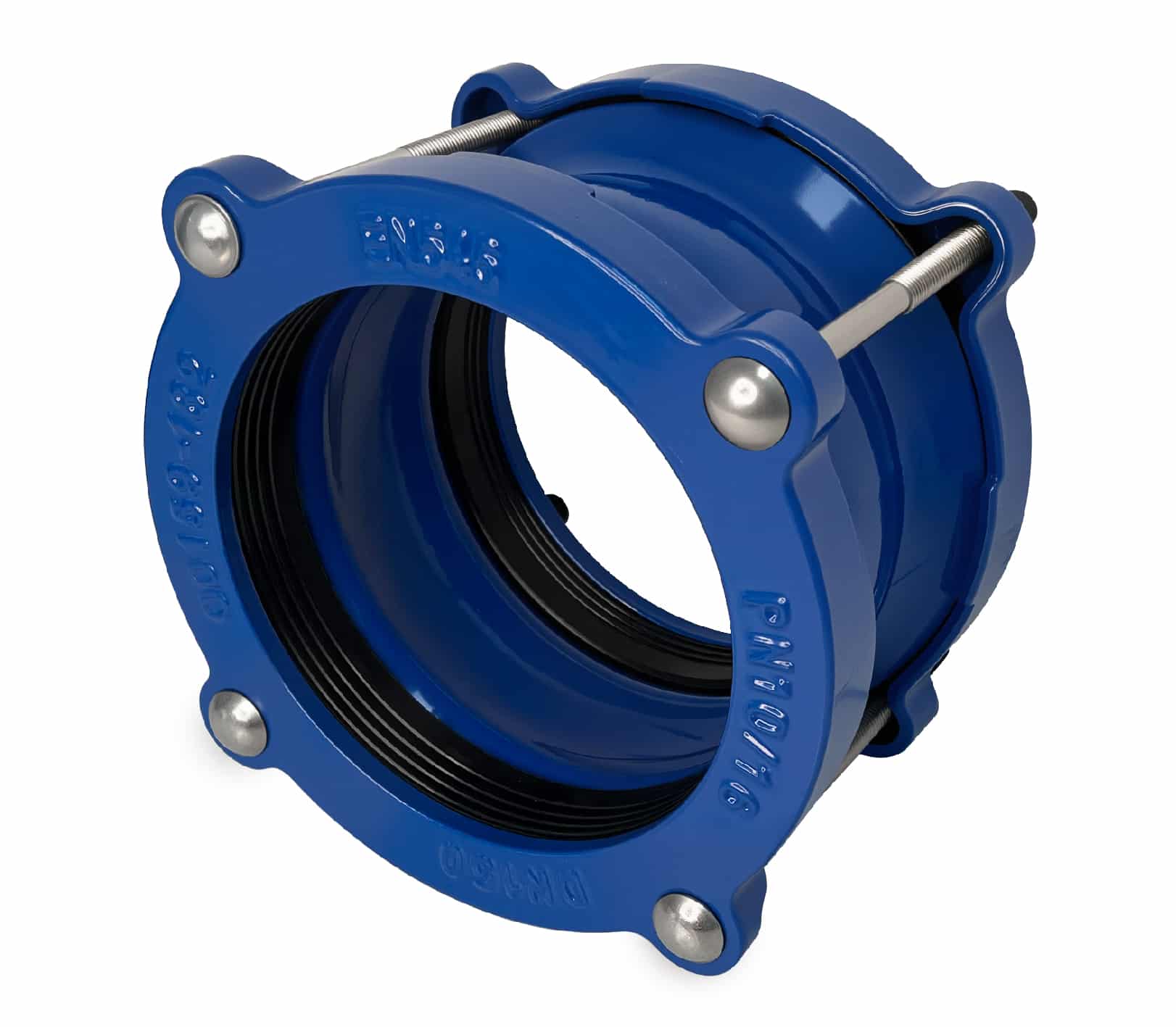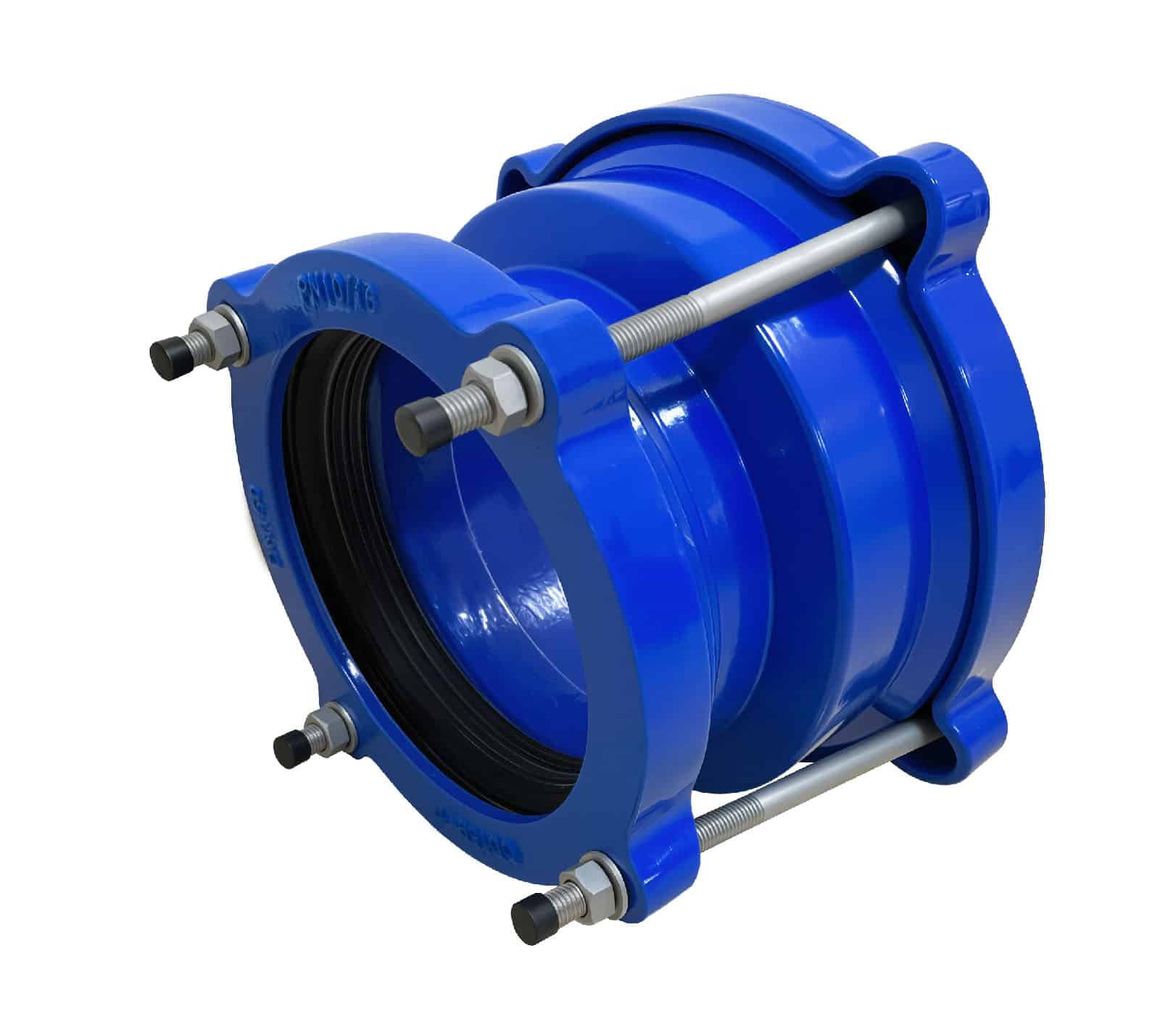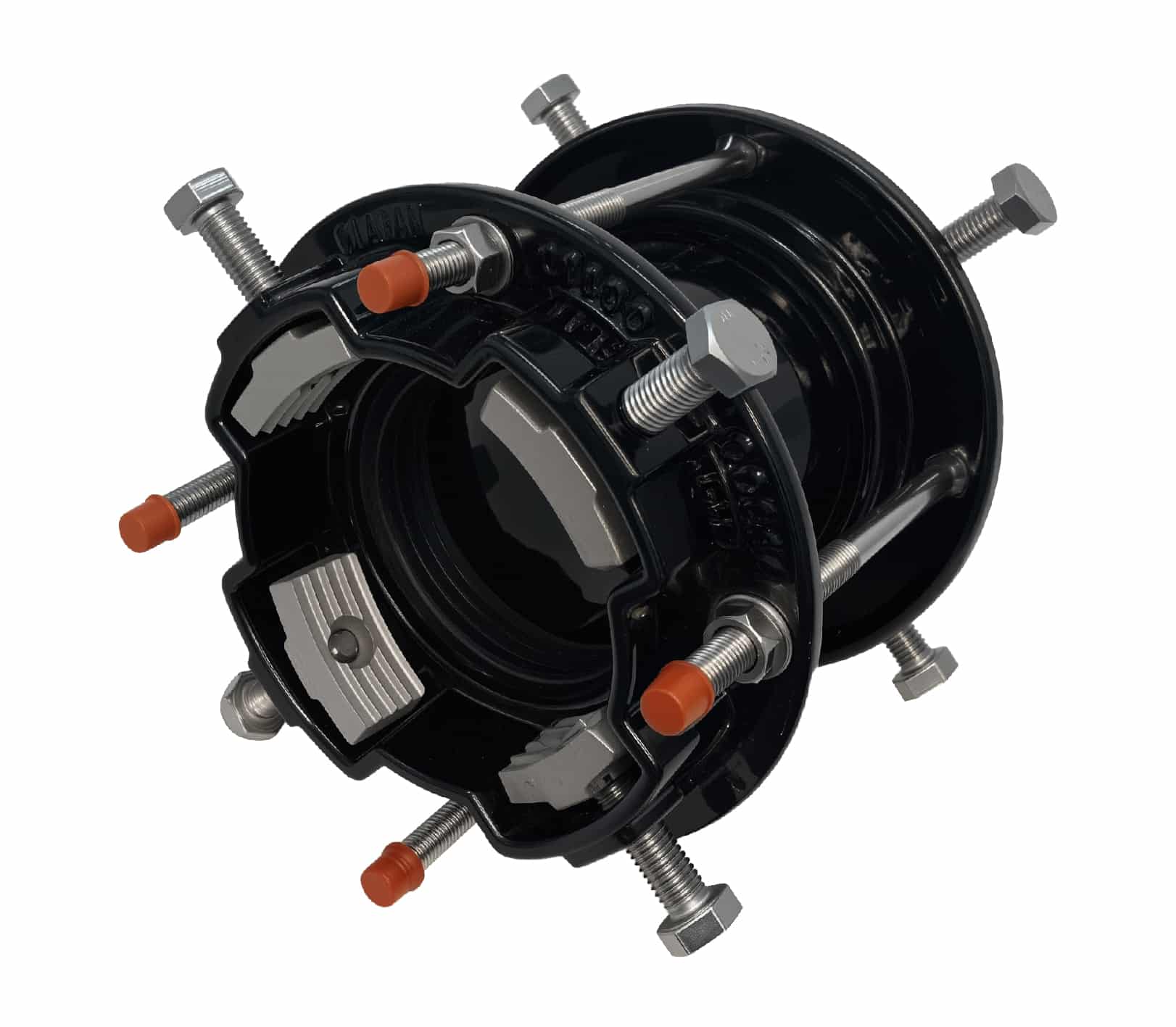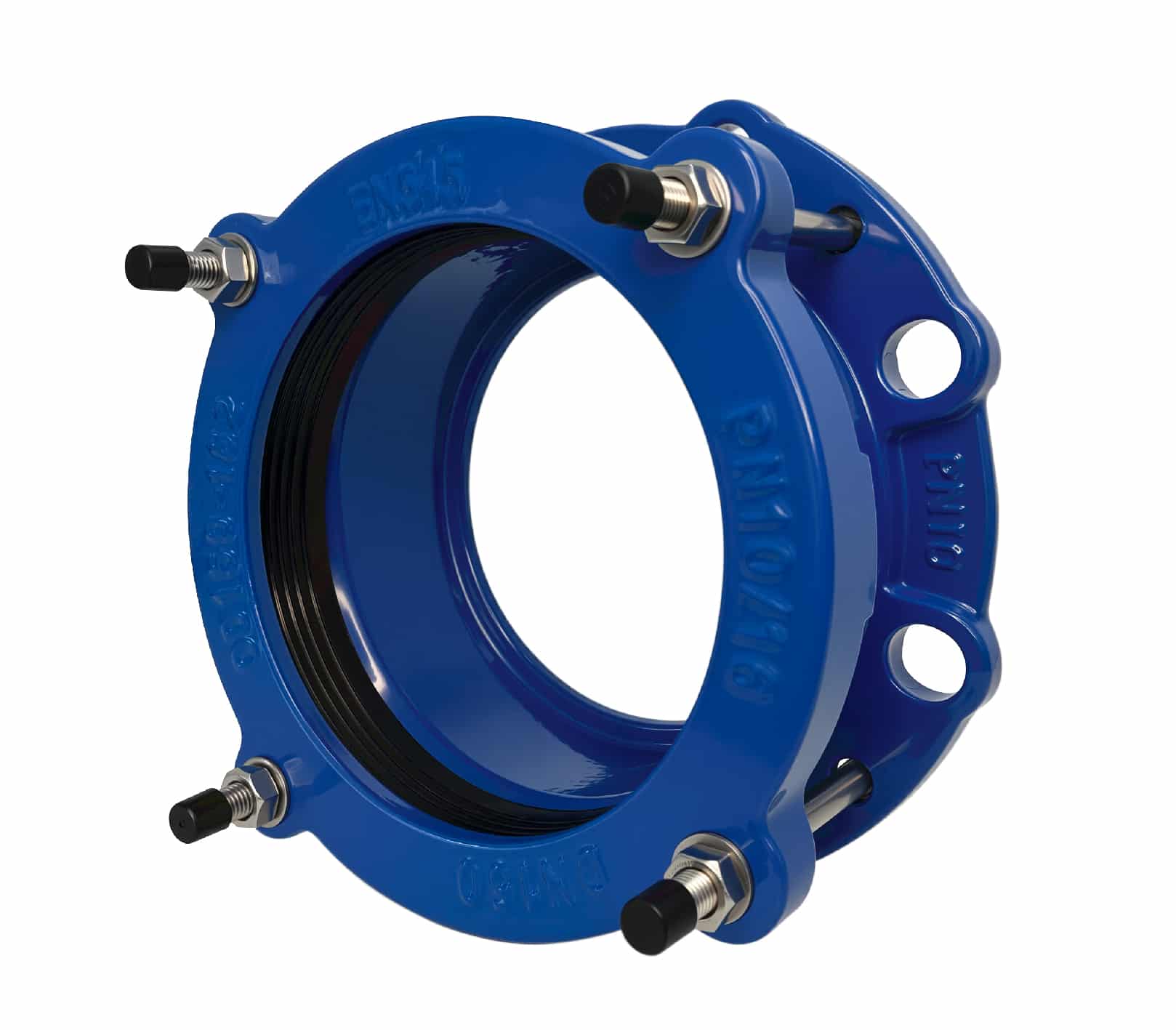Dresser Coupling
A Dresser coupling is a mechanical pipe fitting designed to safely and securely connect two pipes with no leaks. Because it doesn’t require welding, threading, or flanges, it is widely used in a variety of industrial and piping applications, providing a flexible and durable connection. Compared to regular ductile iron pipe couplings, Dresser couplings are designed to provide more flexibility, accommodating slight pipe movement and vibration, while also offering higher pressure ratings in some models.




specification
coupling standard:comply with EN545
Coating standard:EN30677
Test standard: EN12266-1
Working pressure and Temperature
size 2.375″ to 6.625″,Working pressure 330psi
Temperature from -10℃ to 120℃ for EPDM gasket
Temperature from -10℃ to 82℃ for NBR gasket
Suitable for potable water, neutral liquids and sewage
FBE coating, nylon 11 coating or as per client required coating
WRAS,ACS,DVGW,NSF approved
Drawing

Material
| Sr.No. | Name | Material |
|---|---|---|
| 1 | Gland | Ductile iron |
| 2 | Gasket | EPDM/NBR |
| 3 | Sleeve | steel |
Dimension
| Size | Pipe OD | OD | Length | n-M |
|---|---|---|---|---|
| 2" | 2.375" | 60.3 | 5" | 3X5/8" |
| 2" | 2.375" | 60.3 | 7" | 3X5/8" |
| 2" | 2.375" | 60.3 | 12" | 3X5/8" |
| 2" | 2.375" | 60.3 | 14" | 3X5/8" |
| 3" | 3.5" | 88.9 | 5" | 4X5/8" |
| 3" | 3.5" | 88.9 | 7" | 4X5/8" |
| 3" | 3.5" | 88.9 | 12" | 4X5/8" |
| 3" | 3.5" | 88.9 | 27" | 4X5/8" |
| 4" | 4.5" | 114.3 | 5" | 4X5/8" |
| 4" | 4.5" | 114.3 | 7" | 4X5/8" |
| 4" | 4.5" | 114.3 | 12" | 4X5/8" |
| 4" | 4.5" | 114.3 | 24" | 4X5/8" |
| 6" | 6.625" | 168.3 | 5" | 6X5/8" |
| 6" | 6.625" | 168.3 | 7" | 6X5/8" |
| 6" | 6.625" | 168.3 | 12" | 6X5/8" |
| 6" | 6.625" | 168.3 | 16" | 6X5/8" |
| 6" | 6.625" | 168.3 | 24" | 6X5/8" |
Dresser Coupling Parts
Center Ring: A cylindrical ring in the center of the coupling. The center ring has a tapered bell end on each side to accommodate the wedge-shaped portion of the gaskets.
Followers: Located at each end of the center ring to contain the outer edge of the gaskets.
Gaskets: Made from a special Dresser compound, these elastic gaskets form a tight seal between the pipe and the coupling.
Steel Track Head Bolts: Used to secure the followers and clamp the coupling onto the pipe.
Dresser Coupling Working Principle
Assembly: Loosen the bolts on the Dresser coupling and insert the ends of the pipes you want to connect into the Dresser coupling. The gasket goes inside the center ring with its wedge-shaped portion inserted into the tapered bell ends of the center ring.
Sealing: Place the followers on the gaskets and tighten them with the steel track head bolts. As the bolts are tightened, the followers push the gaskets, compressing them to form a tight, leak-proof seal around the pipe ends.
Flexibility: The design of a Dresser coupling allows for a certain amount of flexibility and pipe alignment tolerance, making it ideal for situations where the pipes may expand, contract, or move slightly.
Dresser Coupling Use
Typical uses for Dresser couplings include:
Pipe repairs: Used to make quick fixes to leaking or damaged sections of pipe.
Equipment connections: Connecting equipment such as pumps, compressors, etc., to make future maintenance and replacements easier.
Underground piping: Providing a reliable connection in pipes that need to be buried underground.
Thermal expansion and contraction: Allowing pipes to move as they expand and contract due to temperature changes, preventing pipes from bending and breaking.
Vibration dampening: Used in environments with significant vibrations to act as a cushion.
These applications show the flexibility and high degree of sealing provided by Dresser couplings.The lifespan of Dresser couplings is mainly determined by factors such as the operating environment, pressure, temperature, fluid type, etc. Under normal operating conditions, these couplings typically last for many years, even decades. Choosing the right materials and installing the couplings properly are essential for extending their lifespan. High-quality Dresser couplings can provide long-term, reliable service when well maintained. Regular inspection and maintenance can ensure their performance and lifespan.
Dresser couplings can be used to connect various types of pipes, including:
Steel pipes: Commonly used in industrial and municipal projects.
Cast iron pipes: Commonly used in water supply and wastewater treatment.
Copper pipes: Suitable for water and gas piping systems.
PVC and PE pipes: Used for chemicals and water pipeline.
Other materials: You can also connect pipes made of other materials, depending on your specific needs.
Their versatility and high degree of sealing make them suitable for use in a variety of pipe systems.
RFQ
What is the Max.pressure for judberd dresser coupling?
The working pressure range of Dresser couplings depends on the specific model and application. In general, Dresser couplings have working pressure ratings ranging from 150 psi to 2,250 psi (approximately 10.3 bar to 155.1 bar). Lighter-duty Dresser couplings have a maximum working pressure of 150 psi (approximately 10.3 bar), while heavier-duty couplings have higher working pressures of up to 300 psi (approximately 20.7 bar) or more.
These couplings are commonly used in water supply, wastewater, natural gas, and industrial piping systems, providing reliable connections and seals.
Are dresser couplings restrained?
Dresser coupling can be restrained or non restrained. Compared with non-restrained type, the restrained type can hold the pipe better to prevent the pipe from being pulled out, so it is more suitable for relatively soft and easily deformed pipes, or the ground is easy to cause the pipe to move.






